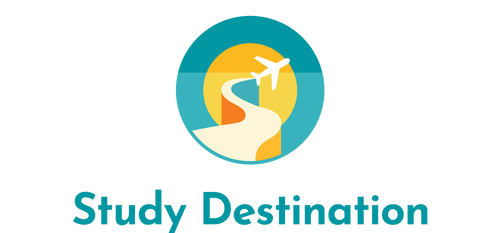🔍Search for a job in Australia
To look for a job in Australia we suggest the following:
- Preparing a personalised resume and cover letter is essential.
- The cover letter should be persuasive, demonstrating your interest in the job and your ability to contribute to the company. Personalise each letter to suit each application.
- Do some research on the interview process and practice answering common questions.
- Attend events, join student groups and associations, and take advantage of networking opportunities to make professional contacts.
- Create an Australian-style resume
- Check recommended Australian platforms for job search
What Makes Australian Resumes Different from International
The Australian resume differs in some details that if missed, might very well ruin your chances of getting a call-back. Don’t worry though, we’re going to cover all of those details.
📄Australian Resume vs CV
In Australia, the terms “resume” and “CV” are used to refer to the same document. You will most likely come across “resume” more often, but if not, know that the terms are synonymous with each other.
How long should an Australian resume be?
In some countries like France, U.S.A, Spain, Italy, a resume should typically be one page.
An Australian resume, however, should definitely be more than one page. If you are a professional, three to four pages are what’s expected. If you are a recent graduate or don’t have much experience in the field, one to two pages will be enough.
Don’t forget to be to-the-point, though. Even though you have the freedom to present yourself with a lengthy resume, you shouldn’t get into unnecessary details.
If you have a lot of years of experience, you shouldn’t go more than 10 years back in your resume. If there are any earlier work experiences that you particularly want to mention, you can do an “other professional experience” section and briefly mention it there. You can also end the section with “Full resume available upon request.”
🗣️Are there any language expectations for Australian resumes?
As a matter of fact, there are. If you're applying for a job in Australia you need to make sure that your resume is written in correct Australian English.
🤳Do you include a photo in an Australian resume?
Some people will tell you not to use a picture but depending on what job you’re applying for a picture can really help to sell yourself.
For example, if you’re a barista and you have a great picture of you behind the coffee machine – use it! If you are a chef and there a picture of you plating up some amazing food – use it! If there is an action shot of you pouring a beautiful cocktail behind a bar – use it!
It’s a good way to showcase your talents and personality.
Pro Tip: There are some countries, like Belgium, France, and Germany, where you should include a photo in your resume. This rule, however, doesn’t apply to Australia
What personal information should you include in an Australian resume?
Just like your photo, personal information can make you vulnerable to profiling based on gender, race, age, or appearance. To avoid that, provide only the necessary contact information like name, address, phone number, and email address.
It’s actually illegal for employers in Australia to ask you for information like age, marital status, religion, sexual preference, or nationality.
📑Typical Australian Resume Sections
Now that we’ve gone over what makes an Australian resume different, let’s focus on its layout and format.
An Australian resume typically has the following sections:
1. Resume Objective/Summary ✔️
Although it isn’t mandatory, it is recommended for you to include a resume objective or summary.
A resume objective (or career objective) states your goals for employment and what you aim for in your career. It’s 1-2 sentences and is great for recent graduates or people who are changing careers.
Example:
- Recent computer science graduate seeking a full-time position as a programmer. Strong knowledge of object-oriented programming and application development tools.
A resume summary (or career summary) highlights your professional experience and gives the employer a glimpse of your skills before reading about them further in your resume. It’s between 3-5 sentences and is great for job seekers with years of experience.
Resume Summary Example:
- Hardworking, self-motivated professional with 3+ years experiences of customer service in a range of different food establishments. I am looking for a position to start my career in Melbourne.
2. Work Experience 🧑💼
Your work experience should be displayed in a reverse-chronological order. With each entry, you should provide the start and end date along with a brief description of your experience, your responsibilities, and your achievements.
When possible, quantify your achievements and responsibilities. This shows the recruiter how you stand out from the rest of the applicants:
Example
Marketing Manager
XY Company
07/2018 - Present
Achievements
- Developed and launched promotional campaigns that increased sales revenue by 12%
- Trained and managed over 15 marketing and sales specialists, making sure sales targets were always met.
If there are any gaps in your employment history, you should account for them as well if possible. Chances are, your interviewer will ask you about it anyway.
If you have work experience in a large company/institution in your country that an Australian recruiter might not be familiar with, you should provide some information on your employer as well.
For example, if you have worked as a sales manager for one of the largest toy companies in your country, don’t be hesitant to provide that information. By simply stating the name of the company you risk downplaying your experience if the recruiter isn’t familiar with the company.
3. Education 🏫
Your education history should also be displayed in reverse-chronological order. Each entry should consist of the name of the institution, date attended, your major/minor/specialization, and any related honors or awards.
For example:
BA in Economics
Bentley University
07/2017 - 05/2021
-Dean’s List 2019, 2020, 2021
-Member of the Investment Club
4. Skills 🤹🏽
A simple list of skills and strengths will provide the employer with a quick snapshot of what you have to offer and what you excel at. In general, it’s best to focus on hard skills, but if you will be listing any soft skills like “leadership” or “critical thinking”, make sure you can back them up with experiences.
5. Volunteer Experience ❤️
If you have any volunteer experience, it’s important to note it on your resume. Hiring managers appreciate it.
Often, volunteer experience can count as work experience too. Especially if it matches with a period of time you were not employed and if it is related to your profession. In that case, you can even include it in the “work experience” section.
6. References 📣
The name, position, and phone number of your referee/s will be enough. Most recruiters contact references after the interview process anyway.
What to Avoid in your Australian Resume
❌UNNECESSARY EDUCATION
Unfinished degrees and high school details are mostly unnecessary.
❌GENERIC SOFT SKILLS
Team Player, Good Speller, Motivated, Dynamic.. It is assumed that you know it and they are not technical skills, there is no big difference if you know one or other.
❌OUTDATED & IRRELEVANT EXPERIENCES
The more irrelevant information you put on your resume. A CV related to your industry!
Request your TFN and ABN
Before seeking employment, you should apply for a TFN (Tax File Number) or ABN (Australian Business Number) - two of the most important numbers you need to apply for to find work in Australia.
The TFN and ABN are just the equivalent of a social security number in other countries. The TFN is a requirement if you want to look for work in Australia with an employer. But if you want to work on your own, you must apply for the ABN.
At Study Destination we can help you apply for your TFN and ABN.
Key Takeaways
The differences of an Australian resume may be subtle, but if you don’t pay attention to them, you probably aren’t getting any callbacks.
To avoid that, when preparing your Australian resume remember:
- In Australia, “resume” and “CV” refer to the same document.
- You can and MUST go longer than one page. 3-5 pages is ideal, but 2 pages can be acceptable if you don't have a lot of experience.
- Your resume has to be written using correct Australian English so always double-check that your spelling is right
- It is highly recommended to include an attention grabbing-resume objective or summary that will make the recruiter intrigued to read further
And that’s a wrap!
Good luck and wish you a successful job-search!


